Can Turtles Eat Lettuce
Some keepers notice that turtles respond differently to lettuce, depending on whether they’re offered romaine, butterhead, or even iceberg. While lettuce is considered a safe and generally nondangerous option, its actual nutrients vary, and that’s why experienced owners often lean toward darker greens when planning a diet. In my own experience, pet turtles sometimes enjoy the variety that lettuce brings, especially when it’s included as a safe treat within a broader nutrition plan. Choosing the right type—such as romaine or butterhead—adds beneficial value without making the meal feel repetitive, but the exception is still the iceberg variety, which carries far less substance beyond water.
Even when lettuce is a part of feeding routines, the emphasis should remain on diet balance. A few times a week is usually enough, guided by factors like species, size, and whether you’re feeding a juvenile or an adult. Every portion should reflect moderation, with a vet input helping refine the feeding frequency for each case. Offering leaves in part of diet portions creates a rhythm that fits into a balanced diet without the overfeeding risk that comes from excess. Personally, I’ve seen turtles react best when the portion relates to their turtle’s head size, making it both a safe treat and a smart approach to long-term feeding.
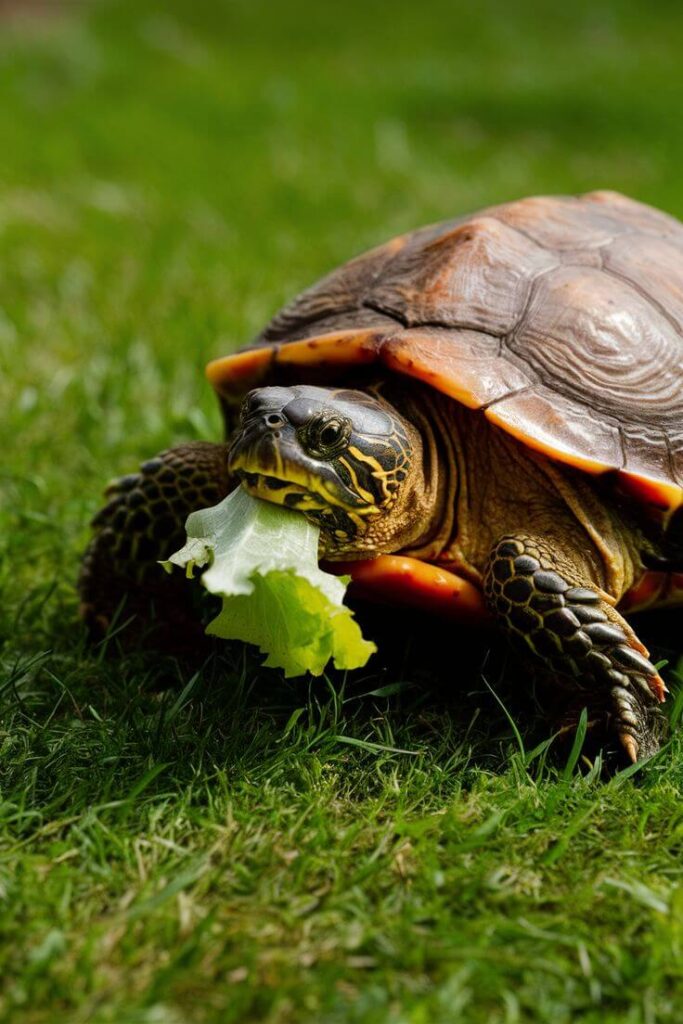
Nutritional Benefits of Lettuce for Turtles
Can Turtles Eat Lettuce, I’ve often observed that turtles respond differently depending on the type of lettuce offered. What fascinates me most is how this simple leaf contributes to digestion and hydration. The crisp layers carry abundant water, which makes them useful for keeping a turtle’s immune system resilient during warmer months.
From a nutritional lens, the fiber and trace minerals tucked into darker greens—like red leaf or green leaf—act as gentle yet effective support for health and growth. Even though some people treat lettuce as merely a filler, its nutritional value becomes obvious when juvenile turtles show better digestion and steady development once small pieces are added into a balanced diet.
Personally, I’ve learned that rotating romaine, butterhead, and other beneficial options—rather than sticking with iceberg, which has poor nutritional content—prevents diet monotony and avoids over-reliance.
While lettuce should not become a staple, careful feeding in moderation as an occasional treat aligns well with a turtle’s natural mix of vegetables, fruits, and plant matter.
It’s equally important to practice safe handling: always wash thoroughly, remove pesticides, and pay attention to residual chemicals, since they may compromise long-term nutrition. With vet advice and consideration of species differences—whether aquatic turtles, box turtles, omnivores, herbivores, or even carnivores that still need greenery—you can make lettuce a small but beneficial part of their balanced feeding routine without overfeeding risks.
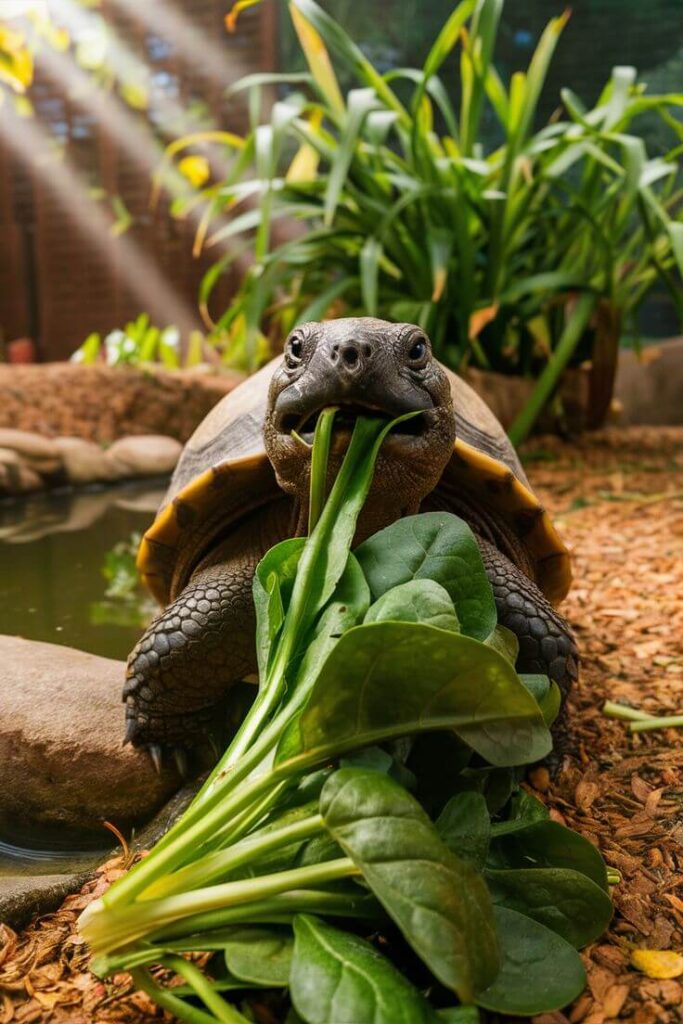
Iceberg Lettuce vs Other Types of Lettuce for Turtles
When comparing iceberg lettuce with darker lettuce and other leafy greens, it becomes clear that not all options support a turtle’s lifespan or turtle growth equally. In my own experience raising pet turtles, I noticed that iceberg creates an iceberg problem: it fills the full stomach but contributes little in terms of vitamins A, vitamin C, or beneficial nutrients. Its poor nutritional value means relying on it alone risks nutrient deficiency, weight gain, and long-term health risk through an unbalanced diet. By contrast, fresh greens like romaine or red leaf provide fiber, beta-carotene, and calcium—building blocks for shell health, cell health, and steady immunity.
Other species-specific notes matter here as well. Herbivorous species thrive on dark leafy greens, non-toxic aquatic plants like duckweed, water hyacinth, or even water lettuce as part of a diet plan. Carnivorous species, needing more protein needs from insects, feeder fish, or live prey, may still nibble lettuce, but in line with a varied diet and careful dietary balance. The practical advice I give is to treat iceberg as an occasional filler under diet guidelines, not a staple caution, while leaning toward nutrient rich options with higher vitamin content and more minerals. This shift avoids feeding error, reduces disease risk, and supports proper beak care in aquatic turtles and other common pet turtles.
How Often Can Turtles Eat Lettuce?
Can Turtles Eat Lettuce, From my direct observation, overfeeding lettuce quickly leads to poor nutrition, digestion issues, and even a reduced appetite in turtles because the lack of variety in their meals disrupts balance. That’s why I treat lettuce as a rotational element rather than a staple—approaching it with clear dietary caution. For example, I usually let my turtles nibble on it every few days rather than daily, ensuring it stays just a part of diet that naturally varies with other vegetables and greens. By spacing feedings, I’ve noticed their interest in lettuce remains steady without affecting their energy or long-term health.
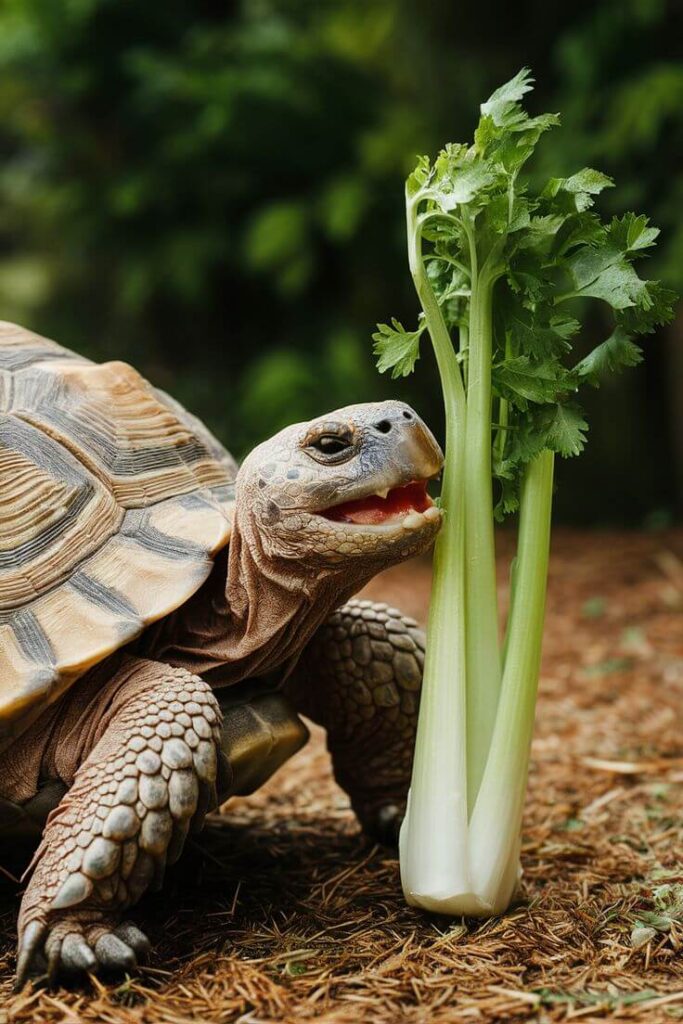
How to Make Lettuce Safe for Turtles
Is lettuce safe for turtles? when preparing lettuce for turtles, I’ve learned that small details in food prep can make a big difference. I always soak the leaves first to remove pesticides, because even trace chemicals can upset their digestion. After rinsing, I focus on hygiene by washing my hands and ensuring the clean water used is free from chlorine. Personally, I prefer trimming away damaged parts before cutting the leaves into manageable sizes, since large chunks can cause choking. I’ve also found that offering leaves straight from cold storage without adjusting temperature can shock a turtle’s system, so I let them reach room temperature before serving.
From my experience, proper storage matters as much as the preparation itself. Keeping lettuce in breathable containers helps retain crispness, and when in doubt, I’ll seek vet advice if I notice any unusual reaction after feeding. Over the years, I’ve realized that thoughtful handling of something as simple as lettuce directly affects a turtle’s long-term health, making each step of preparation an essential habit rather than a minor chore.
Ideal Diet for Turtles (Including Lettuce)
Can Turtles Eat Lettuce, when people picture a turtle’s diet safety, they often overlook how something as simple as chopping or storage can influence well-being. In my own setups, I’ve noticed that the balance of vegetable, occasional fruit, and carefully chosen greens like lettuce transforms feeding into more than routine—it’s active feeding prep. A turtle doesn’t thrive by accident; it’s the careful prep, the awareness of pest residue or harmful sprays, and the commitment to food hygiene that makes a difference. When I soak lettuce leaves, check the source, and ensure proper hygiene, I feel more confident that what I’m offering supports a balanced diet safety framework rather than risking unseen contaminants.
Interestingly, the simple act of taking time to clean and remove pesticides aligns with both reptile health and my own peace of mind as a caretaker. Over the years, shifting attention from just feeding to mindful feeding prep has shown me that turtles interpret texture, freshness, and handling as part of their eating experience. Even within a diverse diet of pellets, vegetable matter, and occasional treats, lettuce prepared with such care becomes more than a filler—it’s a reliable, safe inclusion that matches the reptile’s natural rhythm of cautious selection.
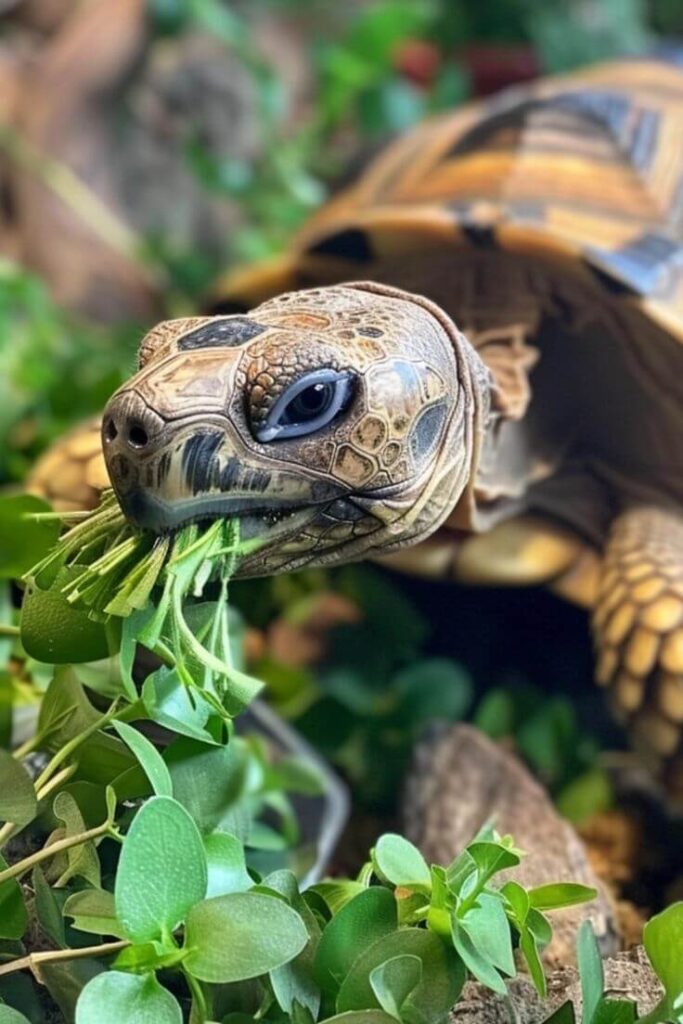
Species-Specific Notes: Which Turtles Can Eat Lettuce?
From my own experience, I’ve seen that red-eared sliders often enjoy dark lettuce leaves, while box turtles show mixed interest—sometimes favoring the outer leaves over the softer inner leaves. Not all species thrive on lettuce as a mainstay, though. For example, aquatic turtles may nibble small portions when offered as an occasional treat, but their balanced diet still relies heavily on other nutrient rich greens. When observing feeding behavior, I noticed that lettuce’s texture gives some turtles the chance to chew and feel full without providing too many nutrients, which is why relying on it alone can be misleading.
Historically, keepers assumed iceberg lettuce was safe because turtles seemed eager to eat it, but that led to issues with feeding frequency and portion control. Today, we know better: better options such as romaine or green leaf lettuce, alongside calcium supplements, support both hydration and minerals essential for shell growth. In practice, I limit servings to a thumbnail size or aligned with the turtle’s head size, usually just a few times a week, to avoid excess. This approach respects species-specific needs while maintaining diet safety and variety.
Risks of Overfeeding Lettuce to Turtles
I’ve noticed that overfeeding lettuce quickly shifts a turtle’s diet away from balance. When too much is given, the excess creates dependency and they refuse other vegetable or protein options. I’ve seen cases where continuous large portions led to digestive slowdown and even shell dullness. In my own tanks, offering only romaine or green leaf every day resulted in selective eating habits that were hard to reverse. The issue is not that lettuce itself is toxic, but that the harmful effects come from crowding out diversity. A turtle that craves lettuce all day misses the benefits of proteins, pellets, and even softer fruit that keep energy and immunity strong.
Another layer of risk comes from the way abundance alters natural foraging instincts. Too much iceberg, which carries water but no real nutrition, leaves turtles bloated and lethargic. I once ran a test where I gave romaine daily for two weeks, and by the end, my turtles ignored shrimp or pellet feeds. This proves that lettuce, if not moderated, can lead to imbalance not because it’s unsafe, but because turtles abandon what’s essential for growth.
How Much Lettuce Can Turtles Eat?
In practice, portion control becomes the line between healthy feeding and hidden problems. I’ve found that a safe amount is rarely more than a leaf about the size of the turtle’s shell, given on a weekly basis. Anything beyond that turns into excess. For juveniles, even smaller cuts are ideal, as they need protein for growth, and lettuce should only support hydration. Owners often ask if daily portions are okay; my experience shows that moderation brings brighter shells and stronger activity, while constant lettuce reduces appetite for richer foods.
What works best is alternating feedings—sometimes a crisp romaine strip, sometimes pellets, sometimes vegetables like collards. That rhythm ensures turtles don’t get conditioned into craving lettuce alone. The psychological aspect is real: once they expect lettuce every day, they may reject variety. So the guiding measure isn’t only quantity, but frequency. Maintaining this routine avoids the negative cycle of overfeeding while still letting turtles enjoy lettuce as part of a rounded schedule.
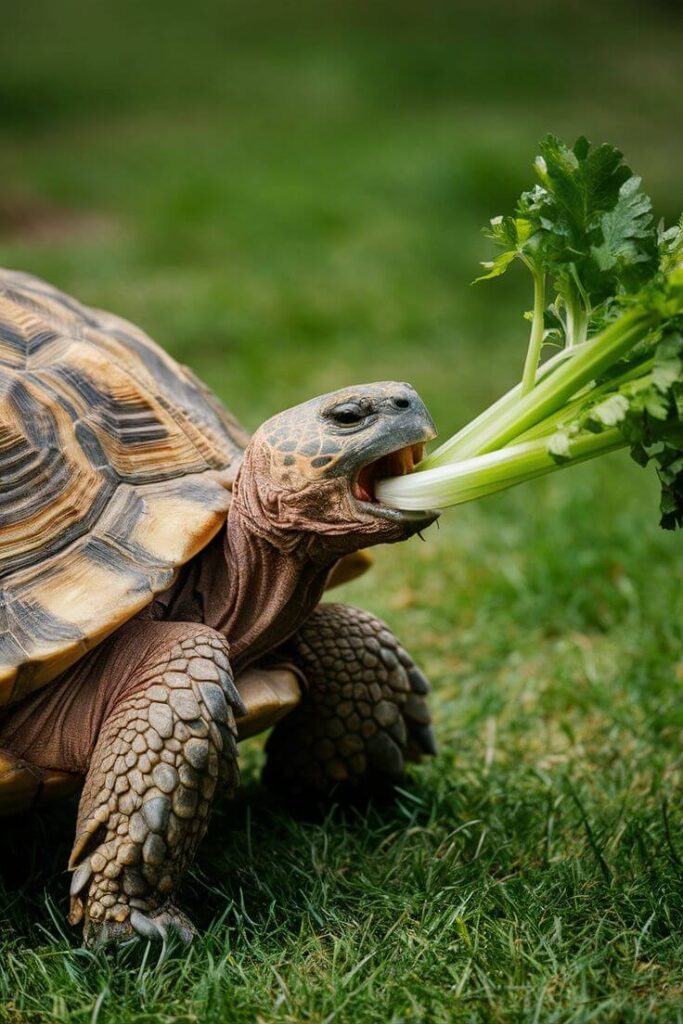
Which Types of Lettuce Are Best/Worst for Turtles?
Can Turtles Eat Lettuce, From my observations, not all lettuce carries equal value. Romaine and green leaf are superior choices, offering hydration along with mild nutrients, while iceberg is largely empty, sometimes even harmful if it replaces better foods. I’ve given both romaine and red leaf over months and saw turtles maintain steady weight and activity. But when iceberg was tested as the main lettuce, turtles showed sluggishness and weaker shell tone. The diet shifts noticeably depending on which type dominates.
I also balance lettuce against other vegetable and fruit options. A crisp green leaf with carrot shreds or zucchini pieces diversifies texture, preventing turtles from becoming picky. For hatchlings, softer romaine chopped small is practical, while adults handle leafier cuts. Worst choices remain iceberg and wilted store leftovers with high pest residue—those not only lack nutrition but also add hidden risk. Knowing the difference allows a keeper to guide turtles toward variety rather than dependence.
How to Safely Prepare Lettuce for Turtles?
Proper feeding prep often matters more than the lettuce variety itself. I make it routine to soak and clean leaves under running water to remove pesticides and reduce pest residue. This step, rooted in food hygiene, prevents digestive problems. Once rinsed, I focus on chopping into strips, since whole leaves often float and turtles tear unevenly, which can cause choking or messy waste in the tank. For me, prep is not just washing but shaping lettuce into safe, manageable bites.
Storage is another overlooked area. I always check the source—whether it’s organic, market-bought, or backyard grown. After cleaning, I refrigerate leaves in breathable bags to maintain freshness while avoiding wilt. Serving spoiled lettuce introduces bacteria that go unnoticed until turtles show signs of stress. Integrating such careful hygiene with rotation of fruit and vegetable options ensures lettuce is not only safe but part of a healthy feeding practice. It’s a simple discipline, yet the difference in long-term health is undeniable.
FAQs About Turtles and Lettuce
1. Is Lettuce Safe for Turtles to Eat?
Yes, turtles can safely eat lettuce in moderation. Darker varieties like romaine, butterhead, green leaf, and red leaf are beneficial, while iceberg lettuce should be avoided because of its poor nutritional content.
2. Which Types of Lettuce Are Best for Turtles (and Which Should Be Avoided)?
The best options are romaine, butterhead, red leaf, and green leaf lettuce because they provide vitamins, calcium, and fiber. Iceberg lettuce should be avoided since it has little nutritional value and mostly water.
3. How Often Can Turtles Eat Lettuce Without Health Risks?
Lettuce should be offered only a few times a week as part of a varied diet. It should be treated as a supplement, not the main staple food, to avoid nutritional imbalance.
4. How Much Lettuce Should I Feed My Turtle Based on Size and Age?
Feed small portions about the size of the turtle’s head or a thumbnail piece at a time. Juveniles may need more frequent feedings than adults, but portion control is important for all ages.
5. What Are the Nutritional Benefits of Lettuce for Turtle Growth and Health?
Lettuce provides hydration, fiber, calcium, and vitamins A and C. These nutrients support shell health, digestion, immunity, and overall growth when combined with a balanced diet.
6. Why Should Iceberg Lettuce Be Avoided in a Turtle’s Diet?
Iceberg lettuce is mostly water with very little nutritional content. It can make turtles feel full while offering almost no vitamins or minerals, which may lead to deficiencies.
7. Can All Turtle Species (Aquatic, Box, Juvenile, Adult) Eat Lettuce Safely?
Most pet turtles, including box turtles and aquatic turtles, can eat lettuce. However, carnivorous species should eat less plant matter, while herbivorous turtles may eat more. Always consider age, size, and species.
8. How Do I Prepare Lettuce Safely for Turtles to Avoid Pesticides and Chemicals?
Wash and soak lettuce thoroughly in clean water to remove pesticides and residual chemicals. Chop it into small, bite-sized pieces and serve fresh to ensure food hygiene.
9. What Are the Risks of Overfeeding Lettuce to Turtles?
Overfeeding lettuce may cause poor nutrition, digestion problems, and weight gain. It can also reduce appetite for more nutrient-rich foods, leading to an unbalanced diet and long-term health issues.
10. Should Lettuce Be a Staple Food or Just an Occasional Treat in a Turtle’s Diet?
Lettuce should be considered an occasional treat or supplement. It can be part of a balanced diet but should not replace staple foods like commercial pellets, dark leafy greens, and protein sources.
11. Can Lettuce Replace Commercial Pellets or Other Vegetables in a Turtle’s Nutrition Plan?
No, lettuce cannot replace pellets or nutrient-rich vegetables. It should be used as a diet variation but must be combined with protein, fruits, and darker leafy greens for full nutrition.
12. Does Lettuce Help With Turtle Digestion, Hydration, and Immune System Support?
Yes, lettuce is high in water and fiber, which aid digestion and hydration. When offered in moderation, it also contributes to immune health through vitamins and antioxidants.
13. Are There Safer Alternatives to Lettuce That Provide Better Nutrients for Turtles?
Yes, dandelion greens, turnip greens, kale, and collard greens are more nutrient-rich than lettuce and provide calcium and vitamins essential for turtle health.
14. How Can I Balance Lettuce With Other Foods Like Fruits, Vegetables, and Protein?
Combine lettuce with commercial pellets, leafy greens, occasional fruits, and protein sources like insects or feeder fish (for omnivores). This ensures a balanced and varied diet.
15. Do Vets Recommend Lettuce as Part of a Balanced Turtle Diet?
Most vets agree lettuce can be part of a turtle’s diet if given in moderation. They recommend pairing it with darker leafy greens, pellets, and other nutrient-dense foods.